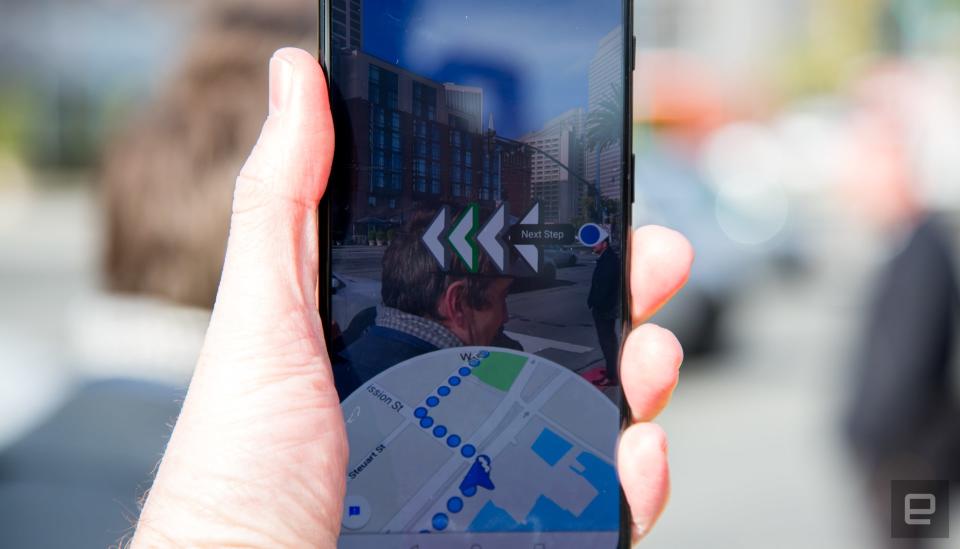Google Maps' AR adds navigation hints to the real world
Oh, I’m pointed that way.
Google Maps has made navigating unfamiliar cities on foot much easier than the days of pulling out a paper map — but it's not perfect. The blue dot that signifies where you are standing can vary wildly from your actual position because GPS is blocked by large buildings and your phone's compass is being thrown off by all the metal surrounding us in urban environments. Google thinks it has a solution: AR. Today, the search giant unveiled its newest pilot: an AR system it's calling "global localization" for on-foot navigation. The system (which was shown off at I/O last year) helps orientate and locate your exact position when GPS has fallen short by combining VPS (Visual Positioning Service), Google's Street View and machine learning. The result is an impressive feature that reduces those moments when you're not quite sure which way to walk. During a demo of the system while walking to a coffee shop, I found it to be helpful with an impressive emphasis on safety. While standing still, you point your phone's camera at nearby buildings and pan back and forth. After a few moments, it determines your position and re-orients the arrow in google maps so you know exactly which direction you need to be heading. It'll do this while you're walking, but after a few moments, it'll prompt you to put your phone down and pay attention to where you're walking. Eventually, it'll turn off the AR effect if you don't heed the feature's warnings. This should help reduce the number of times people walk into other people, poles or worse traffic (while using this feature at least). The onscreen distance countdown and giant arrows telling you where to turn are also helpful in a city like San Francisco where intersections don't always mean right angles and you need a little extra help getting around. While I thought it was a great new tool, Google is still working on it. Starting today it'll be rolled out to select local guides who will test global localization and give feedback to Google. So don't expect it on your smartphone anytime soon. The company still wants to work out the kinks and make sure all its Street View data is on par with the real world. So until then, we're back to relying on the little blue dot and hoping we're walking in the right direction.


